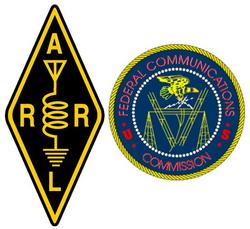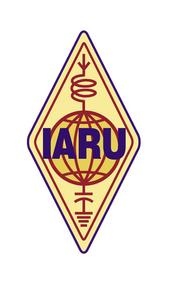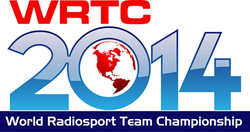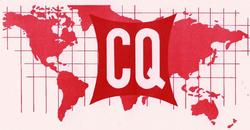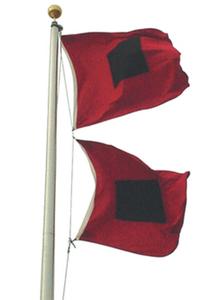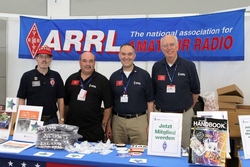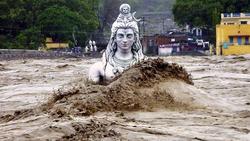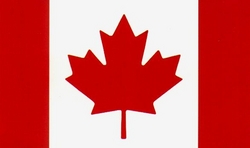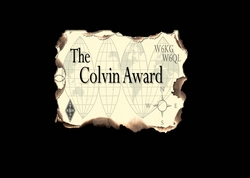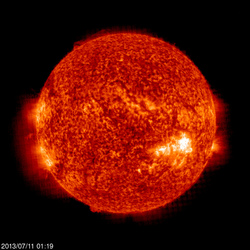 July 11, 2013 John E. Ross, KD8IDJ, Editor
| ||||||||||||
Regulatory: ARRL to FCC: Changes to Encryption Rules Not Necessary The ARRL is calling on the FCC to deny a Petition for Rule Making (RM-11699) seeking to permit the encryption of certain amateur communications during emergency operations or related training exercises. Don Rolph, AB1PH, of East Walpole, Massachusetts, petitioned the Commission in March to suggest an additional exception to §97.113, which currently prohibits "messages encoded for the purpose of obscuring their meaning." "While Mr Rolph has concisely stated his argument, it is ARRL's considered view that there is no factual or legal basis for the assumption that encryption of transmissions...is necessary in order to continue and enhance the utility of Amateur Radio emergency and disaster relief communications," the League said in its comments filed July 8 with the FCC. The ARRL also turned away Rolph's assertion that the current prohibition in §97.113 "has impacted the relationship of Amateur Radio volunteers and served agencies and significantly limited the effectiveness of amateurs in supporting emergency communications." The League said it's unaware of any evidence that served agencies have been reluctant to utilize Amateur Radio as part of their emergency or disaster relief communications plans because of the encryption restrictions in Part 97. The Amateur Service rule is based on a similar prohibition in international telecommunication law, the ARRL noted. The League characterized as "erroneous" and "unfounded" Rolph's assumption that encryption of certain information may be required under the provisions of HIPAA -- the Health Insurance Portability and Accountability Act. The League also said it was unaware of any instance in which state statutes have been cited by any served agency or group as a reason not to employ Amateur Radio for emergency communication. Radio amateurs, the ARRL countered, are not "covered entities" under HIPAA, which applies only to health care providers, health plans and health care clearinghouses. And, the League added, there is no expectation of privacy in Amateur Radio communications. More than 200 comments were filed on RM-11699, most of them tending to support the ARRL's arguments. Read more. Radiosport: IARU 2013 Contest Features "HQ" Stations, WRTC-2014 Station Test Participants in the 2013 the IARU HF World Championship this weekend, July 13-14, not only will be looking to work "HQ" or headquarters station this year but WRTC-2014 test stations. The contest starts at 1200 UTC and ends 24 hours later. The Potomac Valley Radio Club (PVRC) will field "headquarters" stations W1AW and
NU1AW on behalf of the ARRL and the International Amateur Radio Union (IARU), respectively. Working headquarters stations of IARU member-societies around the world provide additional scoring multipliers. Steve Bookout, NR4M, heads the W1AW/4 team, while Frank Donovan, W3LPL, leads the NU1AW/3 team. Operations will be spread among more than a dozen stations in the club's coverage area, all staffed by PVRC members. W1AW/4 and NU1AW/3 will be active on all modes, 160 through 10 meters. Active IARU member-society HQ stations will send signal report and official IARU member-society abbreviation, such as "ARRL" or "IARU." Participating members of the IARU Administrative Council will send "AC," while members of the three IARU regional executive committees will send "R1," "R2" or "R3" as appropriate. All other participants will send signal report and ITU zone. As ARRL Contest Branch Manager Mike DeChristopher, N1TA, points out, the IARU contest is the only one to use ITU zones in the exchange, and the only event to count IARU member-society stations and IARU officials as multipliers. DeChristopher says the IARU is a fun contest for the beginners and veterans alike. "The short format of the contest means a fast-paced weekend," he adds. As part of the run-up to World Radio Team Championship 2014 (WRTC-2014), the international event's organizing committee will have 25 "future WRTC" stations on the air during the IARU contest for a capability and training test. WRTCs run concurrently with the IARU HF World Championship, and the 2014 event will see 65 stations on the
air from various locations in New England. Organizers say the goals of the 2013 station test are to expand the pool of experienced teams for station setup, evaluate proposed site locations, confirm logistics and procedures and gather log data under competition conditions. A similar test was conducted in 2012. The WRTC test stations will be active on 80 through 10 meters, CW and SSB, and many will use WRTC-2014 equipment configuration and scoring rules. WRTC-2014 Co-Chair Randy Thompson, K5ZD, says one goal of the station test is to make sure that the signals of all competitor stations compare favorably with one another. Organizers will compare the test stations' signals via the Reverse Beacon Network (RBN). "We are asking all of our 25 stations to be on CW on certain bands and times with their beams in a specific direction," Thompson said. WRTC-2014 has posted a schedule of times, bands and beam heading as well as a list of active test stations. -- Thanks to PVRC, The Daily DX and WRTC-2014 Radiosport: CQ World Wide DX Contest Rules Get Complete Rewrite The sponsor of the CQ World Wide DX Contest, arguably the premier events of the contest season, has completely rewritten the contest
rules, effective with this fall's SSB and CW weekends (RTTY is not affected)s. "The CQ WW DX Contest rules have evolved for over 50 years," said Contest Manager Randy Thompson, K5ZD, in announcing the updates July 1. "Changes in technology, operating practices and enforcement efforts caused the rules to become increasingly complex." The primary goal of the rewrite, he said, was "to make the rules simpler and easier to understand." The rewrite already has generated considerable online discussion. One change offers a "Classic Overlay" category for single-operator, all-band entries. "The Classic Overlay category is intended for the radio purists who want to participate in the most traditional way," Thompson explained. Entrants will use a single radio and operate without outside assistance, and only the first 24 hours of actual operating time will count toward the operator's score. Also new is a "Rookie Overlay" category for operators licensed 3 years or less. The CQ WW is doing away with the "Xtreme Contesting" and "Team Competition" categories, and "Checklog" is now listed as a noncompetitive entry category. The rewrite creates two categories of Club Competition -- US and DX. Entrants must log contacts as they occur and may not edit their logs after the contest ends. The updated rules also address "unsportsmanlike conduct," such as having an excessive bandwidth, and disqualifications. "Red and Yellow cards have been removed in favor of one action -- disqualification," Thompson noted. Emergency Radio: New Mexico ARES Units Support Wildfire Communications New Mexico Amateur Radio operators assisted local government officials in the wake of the Tres Lagunas wildfire in steep, rugged terrain 15 north of Pecos. The San Miguel, New Mexico, Amateur Radio Emergency Service (ARES) team activated May 31 in response to a request from the county's emergency manager to support communication for the San Miguel County EOC in Pecos. The blaze, aided by high winds and dry conditions, covered more than 10,200 acres and the cause was attributed to a downed power line. "San Miguel ARES provided communications support for 5 days at the county communications trailer at Pecos High School," reported New
Mexico ARRL SEC Michael Scales, K5SCA. "Ten San Miguel ARES hams were involved." ARES team members operated radios in the EOC, maintained a relay station in Las Vegas, New Mexico, and traveled with three volunteer fire departments in the county, Scales added, while Santa Fe ARES remained on standby during the period, in case additional resources were needed. Scales says ARES also provided communication support to the San Miguel County emergency operations in Pecos, the New Mexico State EOC operations in Pecos, the county evacuation shelter at Pecos High School and three volunteer fire departments conducting patrols near the Tres Lagunas fire looking for spot fires and assisting people with respiratory problems. Responding to a request from the county emergency manager, San Miguel ARES offered communication support to state police in the Pecos area, since cell phone service was down in, although the assistance was not needed. Read more. -- Michael A. Scales, K5SCA; InciWeb.org Emergency Radio: ARRL to Host Hurricane Season Webinar The ARRL will host a webinar Monday, July 15, 8-9:30 PM EDT [July 16, 0000-0130 UTC] to present information about the 2013 hurricane season and the Amateur Radio response. The program will offer presentations from representatives from the National Hurricane Center
and WX4NHC, the VoIP Hurricane Net, the Hurricane Watch Net and the ARRL. Webinar registration is open to all, but will be of particular interest to radio amateurs in hurricane-prone areas. If you are interested in emergency communication and hurricane preparedness and response, you are invited to attend this online presentation. Topics will include a meteorological overview of the upcoming season, Amateur Radio station WX4NHC at the National Hurricane Center: Who We Are and What We Do, ARRL Media and Public Relations, the National Hurricane Center, the Hurricane Watch Net, the VoIP Hurricane Net, and ARRL coordination and interface. The session will conclude with a Q&A session. Register online. -- Mike Corey, KI1U, ARRL Emergency Preparedness Manager International: HAM RADIO 2013 Draws 15,300 Visitors The 2013 HAM RADIO international Amateur Radio exhibition June 28-30 in Friedrichshafen, Germany, reports a count of 15,300 attendees, up from 14,800 visitors in 2012. "Ham Radio riding on a wave of success," trumpets a "Final Report," released this week. The theme of the 38th "Friedrichshafen," as the event is familiarly known, was "The Amateur Radio Adventure: DXpedition." Some 200 exhibitors and organizations from 33 countries were on hand to display and demonstrate their latest products. "This gratifying trend underscores the interest in a hamfest that didn't see the participation of some of the larger dealers this year," remarked the Deutscher Amateur Radio Club (DARC) on its website. DARC is the noncommercial sponsor of the international Amateur Radio exhibition. Europe's largest ham radio gathering, the DARC said, offers "last but not least the best opportunity to meet Amateur Radio friends from around the world." "It was a great show," said ARRL Sales and Marketing Manager Bob
Inderbitzen, NQ1R, who posted photos and comments on Facebook. "Crowds seemed very good -- representing a broad demographic of men and women and plenty of young adults." Inderbitzen said his favorite part of the convention was the exhibit area occupied by many of the IARU member-societies. He characterized it as "a melting pot of people, cultures, and language, all drawn together by their common interest in Amateur Radio." Also attending HAM RADIO 2013 on the behalf of the League were ARRL International Affairs Vice President Jay Bellows, KØQB, and HQ staff members Norm Fusaro, W3IZ, and Dave Patton, NN1N. International: India Flooding Renews Community Interest in Amateur Radio for Emergencies The Times of India reports that the recent monsoon flooding disaster in the northern India state of Uttarakhand has prompted officials in other flood-prone regions to establish Amateur Radio facilities to provide emergency communication. In the Coimbatore sub-district (taluk) of Valparai in the state of Tamil Nadu, recent rain damage led to a decision to install a ham radio station to link local government with officials further up the administrative hierarchy in Coimbatore and Pollachi. The Amateur Radio Club in Pollachi, the Times reports, has said it would establish the station free of cost, to support emergency communication in disasters. "The Uttarakhand disaster has prompted us to approach the authorities
with such a proposal. The permission is expected to be granted soon and the radio station will be a reality in another month," the paper quotes K. Ibrahim, VU3IRH, of the Pollachi Amateur Radio Club. Kasi Viswanathan, VU2FFM, from Udumalpet, who is also part of the project, said, "In Uttarakhand, ham radio operators are playing a pivotal role in coordinating rescue works as normal telecommunication gave way in several places. Effective and fast communication is necessary to deal with emergencies." He said Valparai officials have shown great interest in learning about Amateur Radio. Read more. -- Times of India; Jim Linton, VK3PC International: Canada Seeks New 472-479 kHz Ham Band Canada has proposed creating a new MF Amateur Radio band at 472-479 kHz. The 7 kilohertz sliver of spectrum would be available to hams on a secondary basis. The new 630 meter band was proposed in a Consultation released in June by Industry Canada, the nation's radiocommunication regulator. It proposed numerous revisions to
Canada's table of allocations warranted in the wake of World Radiocommunication Conference 2012 (WRC-12). Last year the ARRL asked the FCC in 2012 to carve out the same band for US hams. "It is good to see the progress that our neighbors to the north are making in implementing the new 472-479 kHz amateur allocation," said ARRL CEO David Sumner, K1ZZ. "We hope the FCC will act soon on the petition that the ARRL filed on November 29, 2012, to achieve this goal for amateurs in the United States." Newfoundland LF/MF enthusiast Joe Craig, VO1NA, says he's looking forward to making many domestic and even transatlantic contacts -- and eventually American amateurs -- on 630 meters. "I am happy to learn that we are a step closer to getting the new 472-479 kHz band," he told ARRL. Craig believes the new band will appeal to a wider group of hams than the more-demanding LF allocations. "Transatlantic QSOs, though challenging, should be fairly common using conventional CW and digital modes," he predicted. "You will probably have to homebrew your transmitter, but many new HF transceivers can receive on 472 kHz." Last November the FCC released a Notice of Proposed Rule Making and Order (ET Docket 12-338) proposing the creation of a new LF ham band at 135.7 to 137.8 kHz. Canadian hams already have such an allocation. Read more. DX: ARRL Announces Colvin Awards to DXpeditions The ARRL has made Colvin Award grants to help support three upcoming DXpeditions. Recipients are the K9W Wake Atoll, T33A Banaba Island and FT5ZM Amsterdam Island DXpeditions. The K9W DXpedition is scheduled for September-October 2013, the T33A DXpedition for November 2013 and the FT5ZM DXpedition for January-February 2014. The Colvin Award is funded by an endowment established by Lloyd
Colvin, W6KG (SK), who, with his wife Iris, W6QL (SK), logged more than 1 million contacts during their world travels, assembling one of the largest QSL collections in the world. Approximately $6000 in annual investment income is available. The Colvin Award is conferred in the form of grants in support of Amateur Radio projects that promote international goodwill in the field of DX. Applicants must be groups with a favorable track record in the field of DX and with experience that is directly related to the project being proposed. Proposed projects must have as a goal a significant achievement in the field of DX. APRS: "Golden Packet" Volunteers Wanted Bob Bruninga, WB4APR, is seeking volunteer mountaintop packet operators for the Golden Packet event Saturday, July 20, noon until 4 PM. Primary needs are in New Hampshire, Massachusetts (Mount Greylock), New York (Sam's Point), and North Carolina/Tennessee (Clingmans Dome, Roan Mountain). "Think of this as packet radio Field Day!" says Bruninga, who developed the Automatic Packet Reporting System (APRS). The Golden Packet event is an annual attempt to send an APRS packet message from Georgia to Maine along the Appalachian Mountain Chain. "All you need is an APRS radio that can digipeat, a power source and an antenna." Bruninga says all of the sites are accessible by vehicle except Sam's Point in New York. Volunteers who can activate one of the five locations should visit the Golden Packet site. Read more. -- AMSAT BB ARRL Board of Directors to Meet The ARRL Board of Directors will meet July 19-20 in Windsor, Connecticut. Attending as guests will be International Amateur Radio Union (IARU) President Tim Ellam, VE6SH, and Radio Amateurs of Canada (RAC) President Geoff Bawden, VE4BAW. The Board will hear reports of officers and of several committees. Wayne Smith, VO1TA/VO1WET, SK Contester and DXer Wayne Smith, VO1TA/VO1WET, of Heart's Delight-Islington, Newfoundland, died unexpectedly July 1. He was 59. Smith was a contester and ARRL DXCC Honor Roll DXer, who operated from 1.8 to 50 MHz, CW and SSB. He served in the Radio Amateurs of Canada Newfoundland-Labrador Field Organization. Read more. -- The Daily DX, Joe Craig, VO1NA Getting It Right To clarify the association memberships of DXCC Honor Roll Member Ivy "Keith" Luke, W5AV, who died April 11 (The ARRL Letter, July 4, 2013), Luke was a former member of the Magnolia DX Association and a current member of the 599 DX Association. -- Thanks to Floyd Gerald, N5FG Solar Update Solar sage Tad Cook, K7RA, reports: Average daily sunspot numbers over the past week rose by more than 23 points to 109.4. Average daily solar flux was up nearly 21 points to 127.9. Two days, July 6 and July 10, had the most geomagnetic activity, with a planetary A index of 25 on July 10.
July 7 had a solar flux forecast of 145 on July 11-12, and 150 on July 13-15, but, alas, this was scaled back. The latest forecast calls for solar flux at 115 on July 11-14, then 120, 125 and 120 on July 15-17, 125 on July 18-20, then 120, 110 and 105 on July 21-23, 100 on July 24-25, 105 on July 26, and 110 on July 27-28. Predicted planetary A index is 12, 8, 12, 20, 12, 8 and 10 on July 11-17, then 15 on July 18-21, 8 on July 22, and 5 on July 23 to August 3. On July 10 at 0710 UTC Australia's IPS Radio and Space Services issued a geomagnetic disturbance warning for July 10 noting a coronal mass ejection and that the Bz component of the interplanetary magnetic field was pointing south. In Friday's bulletin look for an updated forecast and reports from readers. For more information about solar phenomena and an explanation of terms, see "Understanding Solar Indices," by Ian Poole, G3YWX, which appeared in the September 2002 issue of QST. This Week in Radiosport
Upcoming ARRL Section, State and Division Conventions and Events
To find a convention or hamfest near you, click here. ARRL -- Your One-Stop Resource for Amateur Radio News and Information Join or Renew Today! ARRL membership includes QST, Amateur Radio's most popular and informative journal, delivered to your mailbox each month. Subscribe to... NCJ -- National Contest Journal. Published bi-monthly, features articles by top contesters, letters, hints, statistics, scores, NA Sprint and QSO Parties. QEX -- A Forum for Communications Experimenters. Published bi-monthly, features technical articles, construction projects, columns and other items of interest to radio amateurs and communications professionals. Free of charge to ARRL members: Subscribe to the ARES E-Letter (monthly public service and emergency communications news), the ARRL Contest Update (bi-weekly contest newsletter), Division and Section news alerts -- and much more! | ||||||||||||
